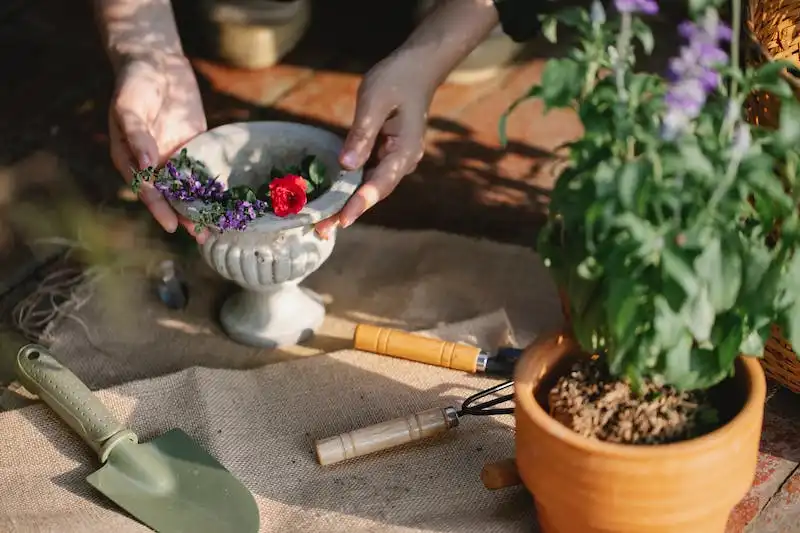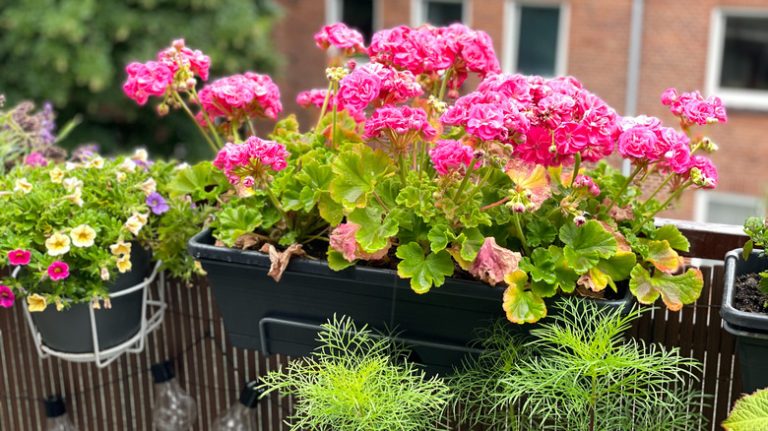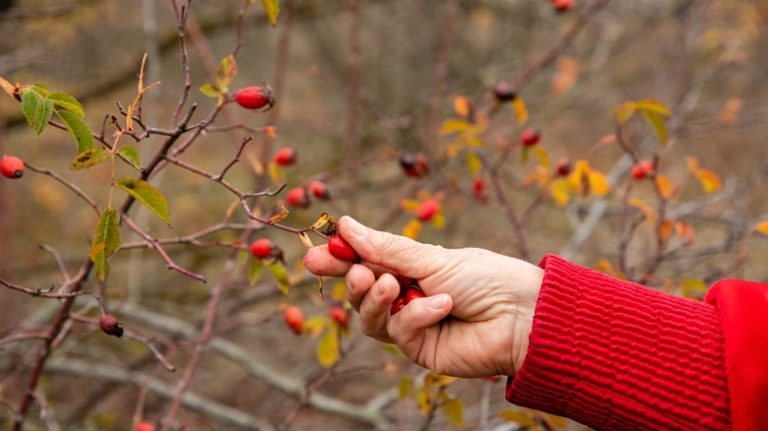Dianthus Chinensis, also known as Chinese pink or rainbow pink, is a delightful flowering plant that can add a burst of color to any landscape. Originating from China, this plant is now cultivated in different regions around the world. Its name “Dianthus” comes from the Greek words “dios” meaning “god” and “anthos” meaning “flower”. This name reflects the beautiful and charming characteristics of this plant.
One of the best things about Dianthus Chinensis is its easy care. This plant doesn’t require much space and can be planted next to other flowers, in rockeries, or in pots. It has a mounding habit with stems that grow up to a length of about 10-12 inches. Dianthus Chinensis blooms in a variety of colors, including shades of pink, white, and raspberry. The flowers are known for their intricate lacy petals that resemble a spider lace, making them a popular choice for cut flower arrangements and as accents in the garden.
When it comes to cultivation, Dianthus Chinensis prefers well-drained soils and full sun exposure. It can tolerate a wide range of soil types but thrives best in loamy or sandy soils. This plant is relatively drought-tolerant but requires regular watering during dry periods to ensure healthy growth. In terms of pests and diseases, Dianthus Chinensis is relatively trouble-free, although it can occasionally suffer from rust. To prevent rust, it is recommended to provide good air circulation around the plants and avoid overhead watering.
Above all, Dianthus Chinensis is loved for its long flowering season. The plants generally bloom from late spring to early fall, providing continuous color and beauty throughout the warm months. If you’re worried about which cultivar to choose, you’ll be delighted to know that there are many different varieties available on the market, each with its own unique charms. Some popular cultivars include “Super Parfait”, “Lighter Than Air”, and “White Lace”.
If you’re looking to add a splash of color and charm to your garden, Dianthus Chinensis is a must-have plant. Its easy care, beautiful blooms, and long flowering season make it a favorite among gardeners and landscape designers. Whether planted in rockeries, borders, or pots, Dianthus Chinensis will surely brighten up any space and bring joy to your outdoor space.
How to Grow and Care for China Pink Dianthus
Dianthus Chinensis, commonly known as China Pink Dianthus, is a beautiful and popular plant that adds charm to any garden or landscape. It is easy to grow and care for, making it a favorite choice among both beginner and experienced gardeners.
China Pink Dianthus thrives in well-draining soils, so it is important to choose a location or prepare the soil in a way that promotes good drainage. Adding organic matter, such as compost or well-rotted manure, can help improve the soil structure and drainage.
When it comes to watering, China Pink Dianthus prefers to be kept slightly on the drier side. Overwatering can cause root rot and other diseases, so it’s best to water only when the top inch of soil feels dry. However, during hot and dry periods, regular watering is essential to prevent the plant from drying out.
For a quick and easy way to add a pop of color to your garden, consider planting China Pink Dianthus in rockeries or beside a window. The plant’s blue-green foliage and white, pink, or red flowers will add a beautiful contrast to the surroundings.
China Pink Dianthus is a low-maintenance plant that grows in a mounding habit, which means it does not require frequent pruning or shaping. Deadheading the spent flowers will encourage more blooms and keep the plant looking tidy.
In terms of propagation, China Pink Dianthus can be propagated through seeds or by division. Seeds should be sown in the spring or fall, while division can be done in early spring or late summer. It’s important to note that some cultivars of China Pink Dianthus, such as the “Siberian” series, may be patented and cannot be propagated without permission from the company.
China Pink Dianthus is generally resistant to common pests and diseases, but it may occasionally develop rust or spider mites. If this occurs, apply an appropriate pesticide or insecticidal soap to control the problem. Regularly inspecting the plant for any signs of damage or disease is recommended to ensure its health.
In conclusion, China Pink Dianthus is a super charming and easy-to-care-for plant that will add beauty and elegance to any garden or landscape. Its quick growth, lovely blooms, and contrasting foliage make it an excellent choice for both beginner and experienced gardeners. So why not add this beautiful Chinese plant to your collection and enjoy its beauty for years to come?
What You’ll Learn
In this article, you will learn about Dianthus Chinensis, a flowering plant that is commonly known as Chinese Pink or Dianthus. You will discover the origin of this plant, its uses in medicine, and the different types and cultivars that exist. You will also learn about the ideal growing conditions for Dianthus Chinensis, including soil type and light requirements. Furthermore, you will find tips on how to cultivate and care for this plant, including watering, pruning, and managing pests. Finally, you will learn about the fragrant and colorful flowers that Dianthus Chinensis produces, as well as its poisonous leaves.
Dianthus Chinensis is a poisonous flowering plant that belongs to the Dianthus genus. It is native to China but is now cultivated in many other regions. The flowers of Dianthus Chinensis come in various shades, including pink, lilac, scarlet, and raspberry. They can be single or double, and some cultivars even have frilly or lace-like petals.
One of the key characteristics of Dianthus Chinensis is its quick-growing nature. It is suitable for zones 3 to 9 and can be grown in a wide range of soils, including well-draining ones. This plant is often used as an edging plant in gardens or as a decoration in rockeries. Its low-growing form makes it perfect for borders or containers.
Dianthus Chinensis is also known for its fragrant flowers, which are highly sought after in the market. The flowers usually open in the spring and continue to delight every season. It is important to note that while the flowers are fragrant, the leaves of Dianthus Chinensis are poisonous. Therefore, caution should be taken when handling this plant, especially if there are children or pets around. It is also called “Chinese Pink” because of its origin in China.
In terms of cultivation, Dianthus Chinensis is relatively easy to grow. It prefers full sun to partial shade and requires moderate watering. The soil should be well-draining and slightly acidic. Regular pruning is recommended to promote bushier growth and ensure a longer flowering season. Some popular cultivars of Dianthus Chinensis include “Diana” and “Doll.” Hybrids with other Dianthus species are also available, offering a wider range of color and texture.
In conclusion, this article has provided an overview of Dianthus Chinensis, also known as Chinese Pink. You have learned about its origin, uses in medicine, and the different types and cultivars available. Additionally, you have gained insights into its cultivation and care requirements, including soil and light preferences. Lastly, you have been made aware of its fragrant flowers and the caution required when handling its toxic leaves. By following the tips and suggestions provided, you can successfully grow and enjoy Dianthus Chinensis in your garden.
What Are China Pinks
The China pink, or Dianthus chinensis, is a type of flowering plant that is native to China. It is also known by other names such as Chinese pinks or China pinks. These plants are part of the Dianthus genus, which includes over 300 species of perennials and annuals.
China pinks are known for their beautiful and fragrant blooms, which come in a variety of colors including pink, crimson, scarlet, and even blue. The blooms are typically patterned with contrasting colors, adding to their visual appeal. The plant has a mounding habit and typically grows to a height of around 6-12 inches.
In terms of cultivation, China pinks are relatively easy to grow. They prefer well-draining soil and full sun to light shade. These plants are drought-tolerant and can thrive in various soil types, making them a popular choice for gardeners. China pinks are also attractive to bees and butterflies, making them a great addition to any pollinator garden.
Propagation of China pinks can be done through seed or cuttings. Taking cuttings from the parent plant and rooting them in a well-draining soil mixture is a common method of propagation. China pinks can also self-seed and produce new plants in the surrounding area.
China pinks are generally disease-resistant, but they can be susceptible to certain pests such as aphids and spider mites. Regular monitoring and proper pest control measures can help keep these pests at bay. Additionally, it’s important to water these plants at the base and avoid wetting the foliage, as this can lead to fungal diseases.
In the landscape, China pinks can be used as edging plants, in containers, or in rock gardens. They are also a great addition to courtyard and cottage-style gardens. These plants are often used as a focal point due to their vibrant colors and delicate blooms.
There are many cultivars of Dianthus chinensis available, each with its own unique characteristics. One popular series is the Dianthus Chinensis ‘Floral Lace’ series, which features plants with fringed petals and a compact habit. Another cultivar worth mentioning is the Dianthus Chinensis ‘Parfait’ series, known for its striking bi-colored blooms.
In Chinese culture, China pinks have various symbolic meanings. They are often associated with love, purity, and innocence. These plants have also been used in traditional Chinese medicine for their supposed healing properties.
Whether you’re a beginner gardener or an experienced plant enthusiast, China pinks are a great choice for adding color and beauty to your garden. With their long flowering period, vibrant blooms, and easy cultivation, they are sure to be a welcome addition to any landscape.




